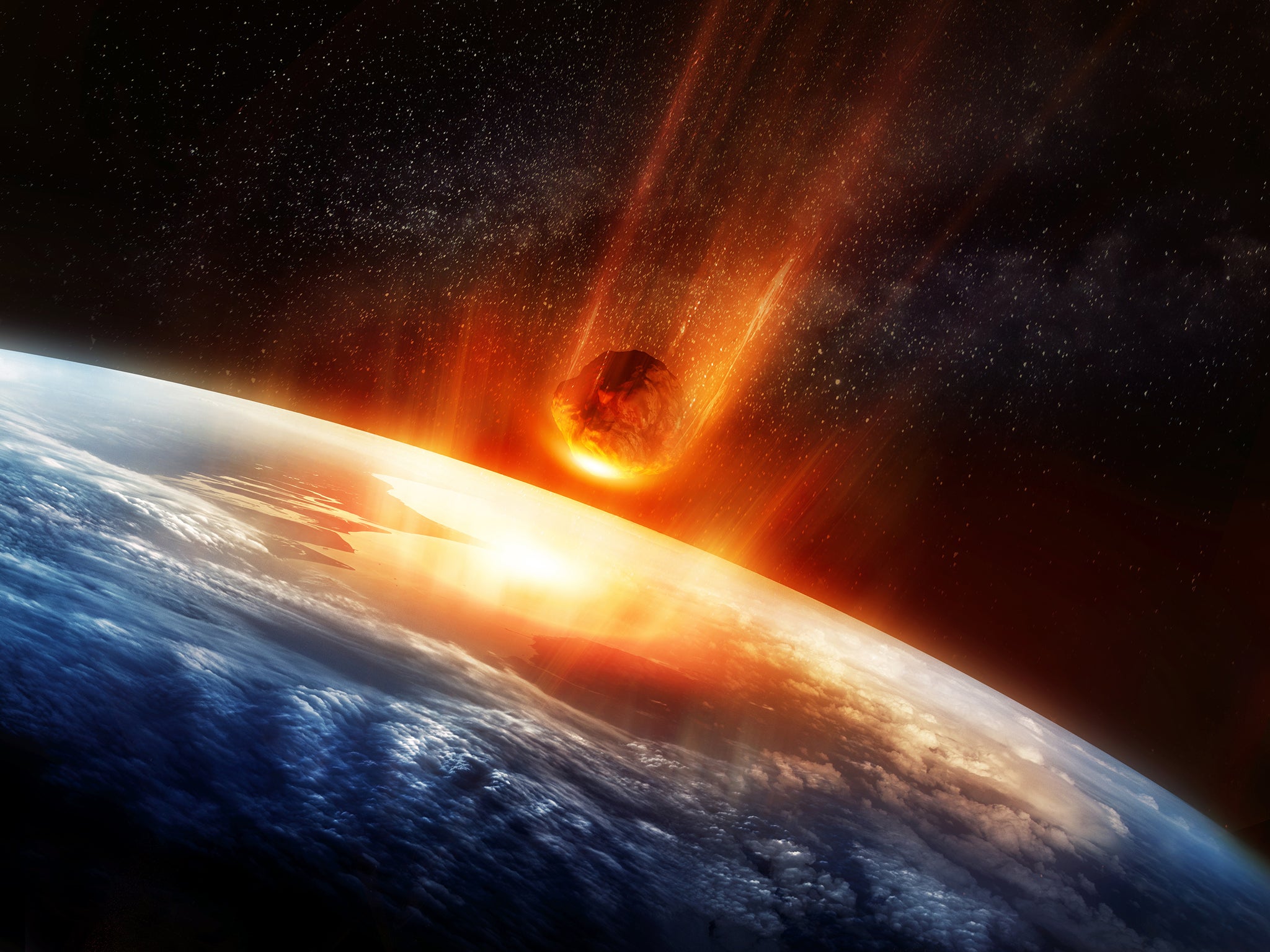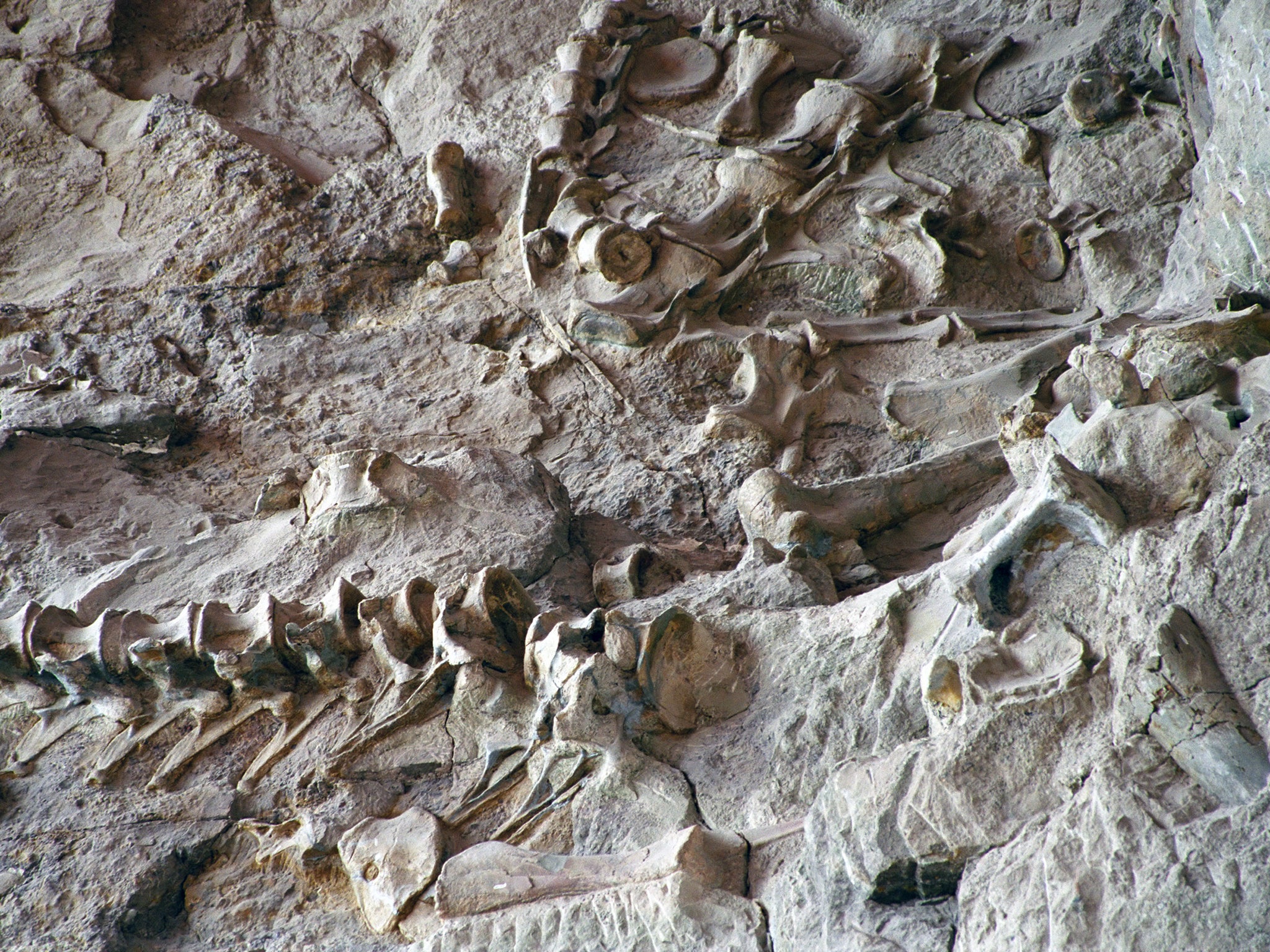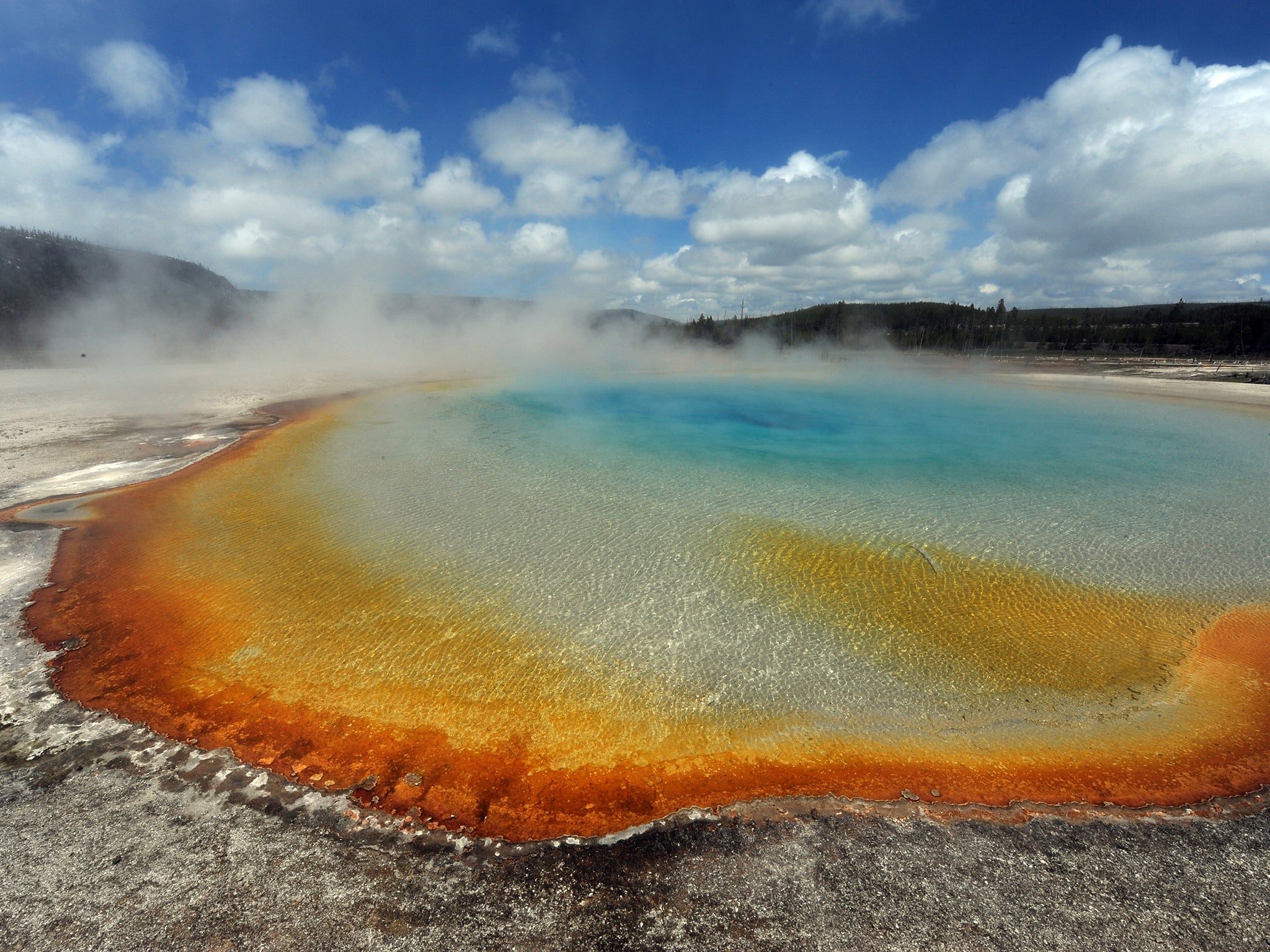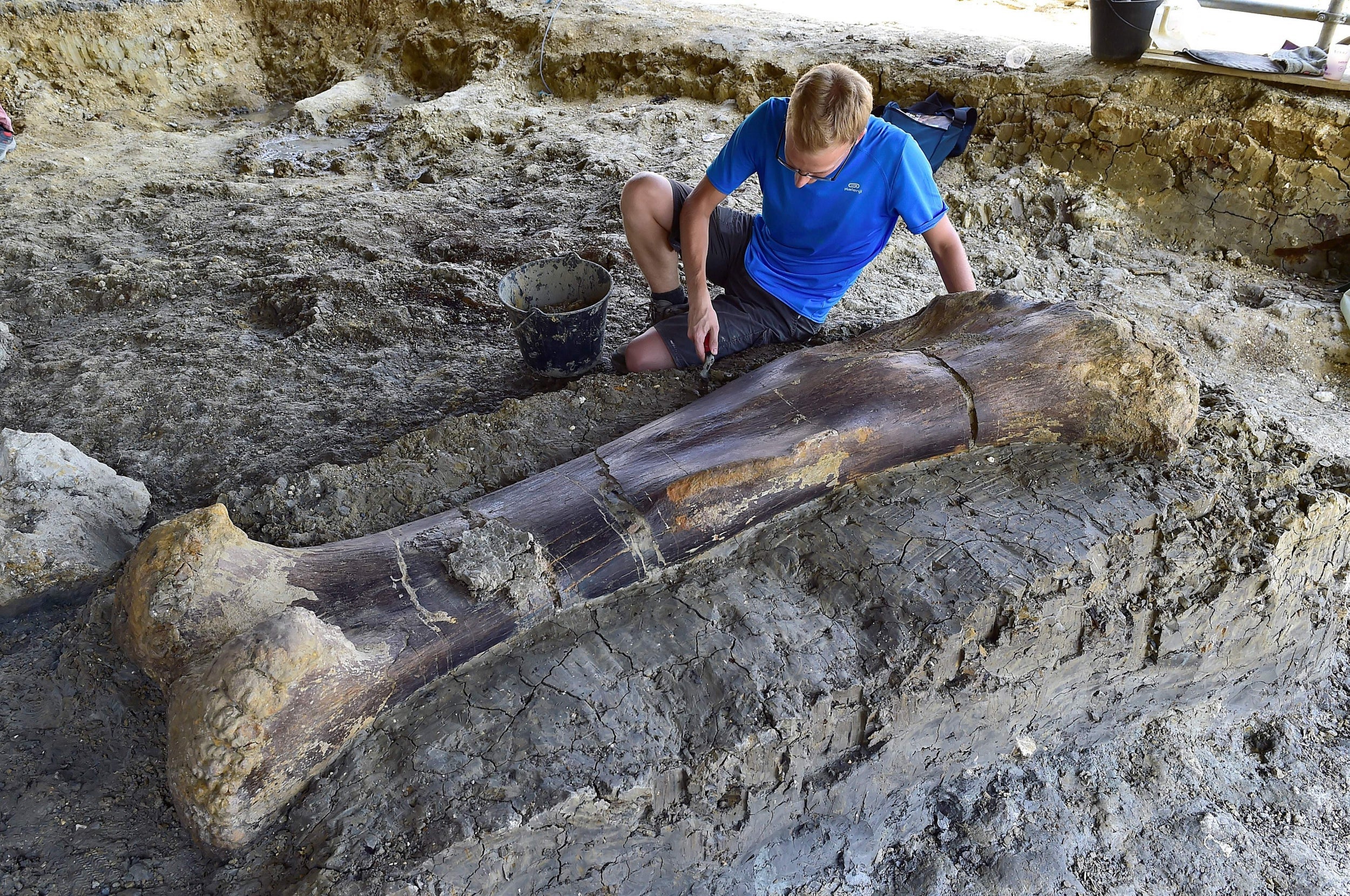How will the world end?
Many of the same events that defined the biggest extinctions in the history of our planet are happening in our time and unfolding at an unprecedented speed. For many extinction scientists studying the fossil record, it’s less a question of will it happen, and more of when, and how many of us will survive. Ashley Coates weighs the odds


From insect population crashes and deforestation to coral bleaching and ocean warming, evidence supporting the claim that we are bringing about Earth’s sixth mass extinction seems to come out almost every week.
A landmark UN report from May this year suggested that species are now being lost “at rates unprecedented in human history”, with around 1 million species directly threatened with extinction. The rate of loss is thought to be somewhere between 10 to a hundred times higher than the average over the past 10 million years – and it is speeding up.
Looking at extinction events in the fossil record, there’s little question as to whether the ecosystem collapse of today counts as a mass extinction.
“You get extinctions happening all the time but when they reach a certain level, we start to call them a mass extinction,” Jennifer Botha-Brink, an extinction expert and scientist at South Africa’s National Museum, says.
“The rate of species loss today is too high to warrant a background extinction, it is not just the number of species that are going extinct, and it is not just climate change that is causing this but habitat fragmentation and habitat loss.”
We know there have been five other mass extinctions in the past 550 million years as they were significant enough to have left an impact on Earth’s geology. The fossil record shows sudden declines in the prevalence of some forms of plants and animals and the emergence of new species, while geochemical and metallurgy changes in ancient rocks point to volcanic activity, an asteroid collision or changes in carbon dioxide levels and the predictability of rainfall.
Is there anything we can glean from preserved rocks that might help us to understand what is happening today? For palaeontologists like the University of Edinburgh’s Steve Brusatte, interpreting and learning from records of events is part of the job.
“This is one of the major reasons we study fossils,” he tells me. “We study them for the same reason a historian might study a manuscript, or a detective would work on a crime scene.”
“We want to know what has happened when real plants and animals have had to deal with real moments of climate and environmental change. We can be very, very confident that certain mass extinctions happened. We can see types of fossil that are very abundant and diverse suddenly disappear, those kinds of patterns are pretty robust”.
Some of the explanations for past events are familiar to us today. Sea level falls, climate change (both cooling and warming) and a meteorite strike have all been attributed to the great “die-offs” of the past.

Others are less well understood. The “clathrate gun hypothesis” is the idea that a substance attached to continental shelves might suddenly start to release methane in the event of rapid global warming, or a decrease in pressure, triggering yet more global warming – methane being a powerful greenhouse gas.
Of the five past events, it is the extinction at the end of the Permian period that has so far proved to be the deadliest. Alarmingly, it is this extinction, and another at the end of the Triassic (200 million years ago) that offer us the best comparators with what we are seeing now. Both were caused by sudden global warming events, a result of volcanic eruptions that released carbon dioxide and warmed the atmosphere and led to a runaway greenhouse effect.
According to Brusatte, “those events (the End Permian and End Triassic) are the most comparable to what is happening today. What we see from those events, is firstly a huge loss of species and then a long recovery where survivors are often creatures you would never have expected to see.
People often comment that what is happening today would be sustainable if it was happening over thousands of years but of course it is now happening in a very rapid and compressed way
“Even in those two events, the speed and the pace of warming is nowhere near as fast as it is today. What we are doing now is off the charts, we are bringing about warming in years, decades and centuries, in the past it is much more prolonged.
“That is something that should give us a little bit of pause.”
The Permian mass extinction closed the Palaeozoic period of geological history and started the Mesozoic, during which the dinosaurs would rise to dominance on land. The P-T extinction (a geologist’s abbreviation referring to the end of the Permian era and the start of the Triassic) is thought to have wiped out 90 per cent of all life around 252 million years ago.
Previously ubiquitous marine species such as the trilobites, a favourite of fossil-hunters, were lost completely, along with around 96 per cent of all other ocean-dwelling life. By this time, life was already well established with certain groups of animals we would recognise today already making headway.
A study by Zhong-Qiang Chen, of the China University of Geoscience, and Michael Benton, from the University of Bristol, concluded that only 2 per cent of snails and 3 per cent of squids survived.

One of the distinguishing features of the Permian extinction was the fate of insects. Most insects are more resilient to extinction events than larger groups of animals such as reptiles and amphibians because they require fewer resources to sustain their numbers. At the end of the Permian, only 57 per cent of insect families went extinct. Today, a huge fall in insect numbers – largely due to agricultural activities – is one of the most disturbing aspects when we think about the issues that might bring about a really rapid undermining of global ecosystems.
“There was an unpredictability in weather patterns, which is what we see in today’s extinction,” Botha-Brink adds.
“You get global warming which results in an increase in rainfall and an increase in temperature. It creates unpredictability which is what makes it so difficult for animals to adapt, and why the rate of extinction is so high. It is this unpredictability that is one of the reasons why the Permian is more relevant to today than the other extinctions.”
There has long been an assumption, still valid but with less currency than before, that the Permian extinction must have taken place gradually in order to have had such a far-reaching effect. Now the general consensus is that there was “a sudden punch”, most likely to have been the result of massive volcanic eruptions. The Siberian Traps, a 3 million-square mile area of basalt rock that dates from this period, are thought to be evidence of at least part of this deadly event.
“All we have left are the rocks that were formed during that time,” says Brusatte.
“They have chemical clues as to what was happening but the resolution gets worse the further you go back in time, you don’t have a moment-by-moment record of what was happening. You have to use the clues that you have to come up with as detailed an explanation as you can.”
99%
of all species that have ever lived on Earth have died out
Professor Mike Benton, a leading expert on the Permian extinction and author of When Life Nearly Died: the greatest mass extinction of all time, tells me: “When I started in the field people were a bit unclear about which were the major extinction events and whether they were all caused by the same driver or not.
“In the last few years, people have realised there are numerous volcanic-driven extinctions through the Permian and Triassic, including the big events at the ends of those geological periods. We have quite detailed models now for the End Permian and that model also applies to the end Triassic.”
Benton is in no doubt about the similarities between today’s activity and what he has seen through his work. The P-T is the closest life has ever come to ending completely on Earth and it took 10 million years to recover fully. Apart from the increase in emissions of carbon dioxide and methane, there is evidence of the consequences of this warming that we would be familiar with today.
“Acid rain, ocean acidification, the warming and stagnation of the ocean basin, which we are seeing happening today, clearly happened then,” he tells me.

“People often comment that what is happening today would be sustainable if it was happening over thousands of years but of course it is now happening in a very rapid and compressed way”.
There have been many extinctions in the past 550 million years but the one the palaeontologists are all pointing to as a comparator is the biggest one, the Permian, responsible for a 90 per cent decrease on life on Earth. I asked Benton if this scared him.
“We know all is not well,” he says, “but you don’t sit on the edge of your bed quivering.
Broadly speaking larger organisms are more at risk than smaller ones ... It is really about generalists versus specialists, having the ability to live in a wide range of habitat is helpful, and being comfortable with quite a wide temperature range
“It does fill me with deep concern. Most researchers and scientists from the Earth sciences and environmental sciences would see the intimate link between the past and today. All the commentary from Extinction Rebellion, to the IPCC, to the broader scientific community, we all pretty much agree”.
Although the Permian stands out for its calamitous loss of biodiversity, the best known of the five mass extinctions is the one that happened 66 million years ago at the end of the Cretaceous period. Formally described as the Cretaceous-Paleogene (K-Pg) extinction event, most of us are aware of the leading theory for the global meltdown that wiped out all of the non-avian dinosaurs.
First proposed by the father and son team Luis Alvarez and his son Walter in 1980, it is theorised that a six- to nine-mile wide asteroid hit the Earth where the Gulf of Mexico’s Yucatan Peninsula is today, forming the 150-mile wide Chicxulub crater and taking out 75 per cent of life on Earth.
Along with the dinosaurs went a host of flying and marine reptiles, many of which had been part of ecosystems for millions of years. Brusatte says the sudden loss of life may have lessons for us today.
“Dinosaurs were truly dominant in every way you can conceive,” he says. Reflecting on the end of his book The Rise and Fall of the Dinosaurs, he adds “some of them were bigger than airplanes. They were thriving, they were living all over the world and then they disappear, right at the same time the asteroid comes out of the sky.

“Dinosaurs were around for a long time and yet they disappeared very suddenly when the climate changed. Dinosaurs could not have seen that asteroid happening, but we are agents of our own doom in many ways.
“They were replaced by an ecosystem that would later include us. We are part of the history of the Earth and we would not be here otherwise.”
If this extinction is going to happen, and we can’t stop it, what is likely to survive? It seems, in both the Permian and Cretaceous events, it was the smaller animals that could rely on multiple food sources that had the better chance of survival. These pioneer species (also known as disaster taxa) are often the seemingly less dominant species from previous epochs, such as the scurrying mammals that lived in the shadows of the dinosaurs, and can give rise to successful and diverse families of plants and animals.
“Broadly speaking larger organisms are more at risk than smaller ones,” Benton tells me, “and that tends to be because they live in smaller populations, not just because they are big, their diets are often more specialised as well.
“It is really about generalists versus specialists, having the ability to live in a wide range of habitat is helpful, and being comfortable with quite a wide temperature range.”
Species with a limited geographical range are also at high risk according to Benton, a situation we have seen in more recent history with the island populations of large birds that have been wiped out since humans arrived on the scene.
“If life can survive the Permian extinction, it can survive anything,” Hillel J Hoffman recently commented in National Geographic. That might well be true, but exactly how humans fare remains to be seen. We are certainly generalists, with a very wide geographical distribution and a very large population. Extinction scientists are optimistic that there would be at least some remnants of humanity left.
Like the End Permian and End Cretaceous extinctions, the extinction caused by us could now define a new epoch in Earth’s geological history, controversially dubbed the Anthropocene.
The exact time at which the Anthropocene began is the subject of some contention, with historians pointing to the start of industrialisation and the rapid growth of the human population, while scientists look to more recent environmental markers. After years of debate, the Working Group for the Anthropocene finally decided upon 1950 as the year in which the Holocene ended and our current epoch began.
While the way we mark out mankind’s influence in geological time is still being debated within the scientific community, there is now general acceptance that there is an extinction event happening on Earth today and the need to respond to it at pace is critical.
Many of the same processes that defined the biggest extinctions in history are happening in our own time and they are occurring faster than we would typically expect, even for a major extinction event.
The fossil record and the very clear message from the people who study it should be yet another reason for us to think very seriously about the speed with which we choose to respond to today’s crisis and avoid the fate of the dinosaurs.
Join our commenting forum
Join thought-provoking conversations, follow other Independent readers and see their replies
Comments